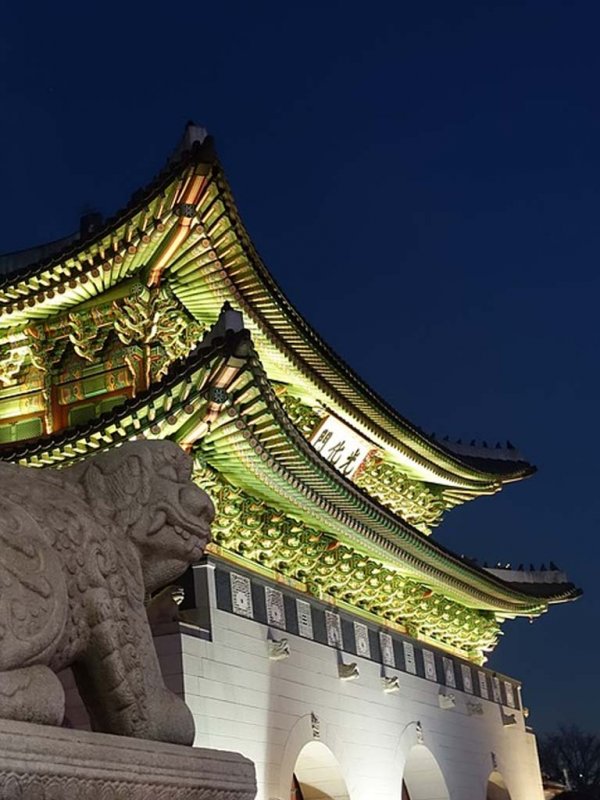-

gwanghwamun1-600x800
-

gwanghwamun1-600x800
The country of the morning calm, full of history, and its capital, Seoul, abounds with authentic treasures. Join this 9-hour private Tours in Korea to explore some of the most renowned masterpieces of South Korean culture. From the magnificent palaces to the N Tower, this tour will lead you through the ages to discover the old & the brand new capital in this Seoul city tour.
Itinerary
Pick-Up From Hotel
.
.
1. Drive-By the famous Landmarks City hall, Gwanghwamun Plaza
.
.
2. Jogyesa(Temple) Visit
.
.
3. Royal Guard Changing Ceremony
.
.
4. Gyeongbok Palace(Deoksu Palace on Tue)
.
.
5. The National Folk Museum
.
.
6. Pass by the Presidential Blue house.
.
.
7. Redpine or Ginseng Center
.
.
– - Lunch - –
.
.
8. Changdeok Palace(Bukchon Hanok Village on Mon)
.
.
9. Redpine or Ginseng Center
.
.
10. Insadong
.
.
11. Namdaemun Market
.
.
– - Hotel - –
**Notice:- You might not be allowed to pass by the Presidential Blue House for security reason.
Highlights
- Jogyesa(Temple)
As the main temple as well as the district head temple of Jogye order in Seoul Tours In Korea, Jogyesa Temple is the centre of Korean Buddhism. The temple was built in the late 14th century during the Goryeo period and was once turned into ashes due to fire and was rebuilt under the name of Gackhwangsa Temple in 1910 with the effort of many respectful monks, namely Han Yong-un and Lee Hee-gwang. The temple was given a role as the head temple of Korea's Buddhism and renamed to Tegosa Temple in 1936. In 1954, a purification drive took place to eliminate Japanese influence and revive traditional Buddhism, which established the present-day Jogyesa Temple as a result.
- The Royal Guard Changing Ceremony
This ceremony is an excellent opportunity to experience a rare traditional scene in Korea, as the ceremony is reenacted precisely as it used to be held, with guards wearing royal uniforms, carrying traditional weapons and playing traditional instruments. A tradition comparable to the Changing of the Guards at Buckingham Palace, this ceremony takes place twice a day in front of Gwanghwamun, the main gate of Gyeongbokgung at 10 am and 2 pm (except on Tuesdays).
- Gyeongbok Palace(Deoksu Palace on Tue.)
Built-in 1395, Gyeongbokgung Palace is also commonly referred to as the Northern Palace because its location is the furthest north when compared to the neighbouring palaces of Changdeokgung (Eastern Palace) and Gyeonghuigung (Western Palace) Palace. Gyeongbokgung Palace is arguably the most beautiful and remains the largest of all five palaces.
- The National Folk Museum
Located inside Gyeongbokgung Palace, the National Folk Museum of Korea presents historical artefacts that were used in the daily lives of Korean people in the past. Through the displays, visitors can learn about the domestic and agricultural lifestyles, as well as Korea's cultural beliefs.
- Changdeok Palace(Bukchon Hanok Village on Mon)
Changdeokgung Palace was the second royal villa built following the construction of Gyeongbukgung Palace in 1405. It was the principal palace for many kings of the Joseon Dynasty and is the most well-preserved of the five remaining royal Joseon palaces. The palace grounds are comprised of a public palace area, a royal family residence building, and the rear garden. Known as a place of rest for the kings, the rear garden boasts a gigantic tree that is over 300 years old, a small pond and a pavilion
- Insadong
Insa-dong, located in the heart of the city, is an important place where old but precious and traditional goods are on display. There is one main road in Insa-dong with alleys on each side. Within these alleys are galleries and traditional restaurants, teahouses, and cafes.
The teahouses and restaurants are the perfect complements to the galleries. At first, they might be hard to find, but if you take the time to stroll around the twisting alleyways, the window shopping in itself can be very entertaining. The shops in Insa-dong are trendy among all age groups because each one is unique.
- Namdaemun Market
Opened in 1964, Namdaemun Market is the largest traditional market in Korea with shops selling various goods. All products are sold at affordable prices and the stores in this area also function as wholesale markets.
Most of the goods are made directly by the storeowners. Namdaemun Market is even open overnight, from 11:00 pm to 4:00 am, and is crowded with retailers from all over the country. When day breaks, the site of busy shoppers bustling around the market creates a unique scene that attracts tourists worldwide. Namdaemun Market sells a variety of clothes, glasses, kitchenware, toys, mountain gear, fishing equipment, stationery, fine arts, accessories, hats, carpets, flowers, ginseng, and imported goods.
Additional Perks Into The Package
- Guide
- Transportation
- Meal
- Tickets
Terms & Conditions
- Tour should be booked at least 24 hours before
- No cancellations, refunds or changes can be made afterwards.


Load more comments